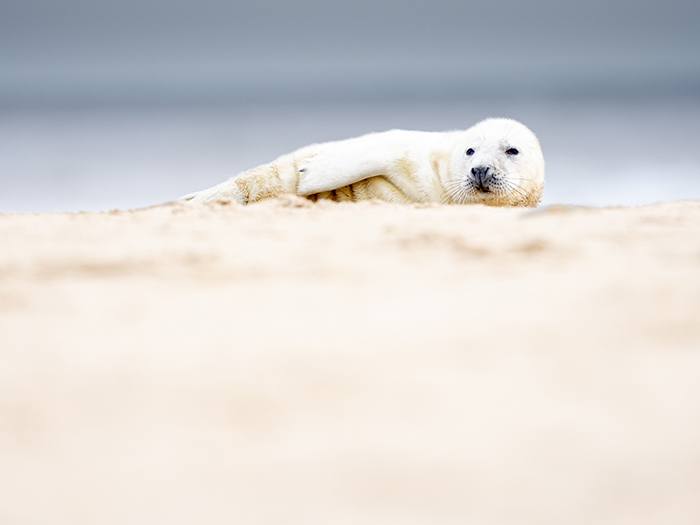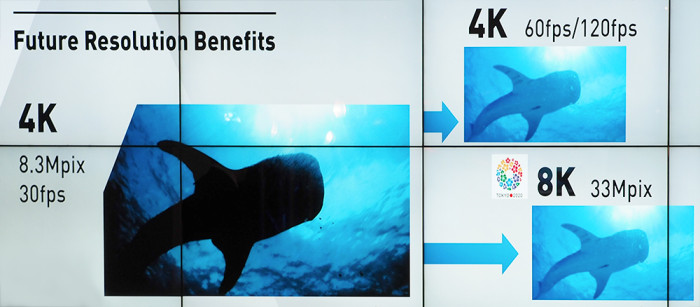Guets Post: Gentle Giants by Johan Siggesson
Gentle Giants
by Johan Siggesson
Web: https://www.johansiggesson.com
Facebook: https://www.facebook.com/JohanSiggessonPhotography
Instagram: https://www.instagram.com/johan_siggesson_photo/
Welcoming me to the UK was heavy rains together with icy winds mixed with fine grains of sand blasting my face. A natural skin peeling so to speak. I would not have expected anything else from the English coast in December. Despite the rather severe conditions, I was more than pleased. I much prefer the harsh weather rather than blue skies and sunshine. Nasty weather produces much more interesting images in my humble opinion. Together with a group of like minded, I had just arrived to this beautiful beach in the Norfolk area of the UK. It was my first time in the area. We had a few hours left until the sun once again would sink below the horizon. After a short walk from the parking area down to the beach I was greeted by an unbelievable sight.
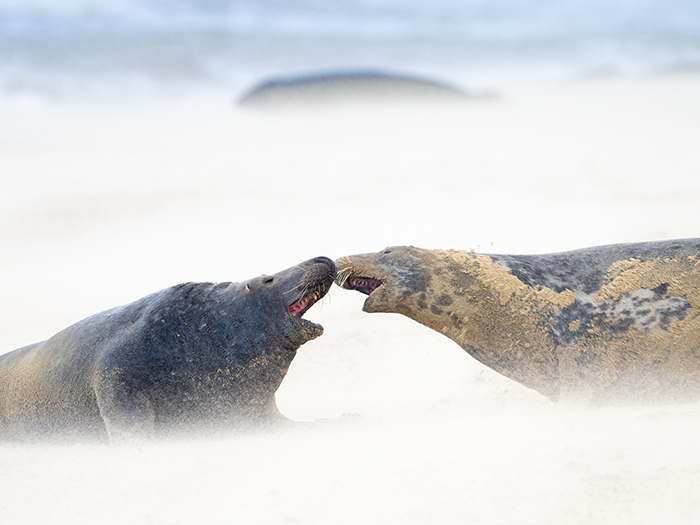
Hundreds of Grey seals were resting, nursing, fighting and mating on the beach. These massive mammals come up on land to give birth, nurture their young for a few weeks and then mate again before heading back to sea. They ascend onto the beaches in November and are normally gone by January. A fantastic spectacle and the reason I was here with my new Olympus gear. I had just acquired the OM-D E-M1X and a Zuiko 300mm f4 IS PRO. Blowing sand and salty water is less than ideal for high-tech gear and I was eager to try them out in these bitter conditions.
On this beach away from the every day buzz, I am surrounded by hundreds of gentle giants. I am walking the beach amongst these 300kg colossuses and it is a pure privilege. Given the respect they undoubtedly deserve, they will give you satisfying acceptance in return. That special feeling being accepted by a wild animal is hard to describe. It has to be experienced.
It is important to stress the fact that they are in fact wild animals and should be respected and treated as such. They can definitely hurt you if you ignore the signs. Keeping a respectful distance is a must and will ultimately benefit yourself and the seals. We need to remember we are guests in their domain and should respect their rules.
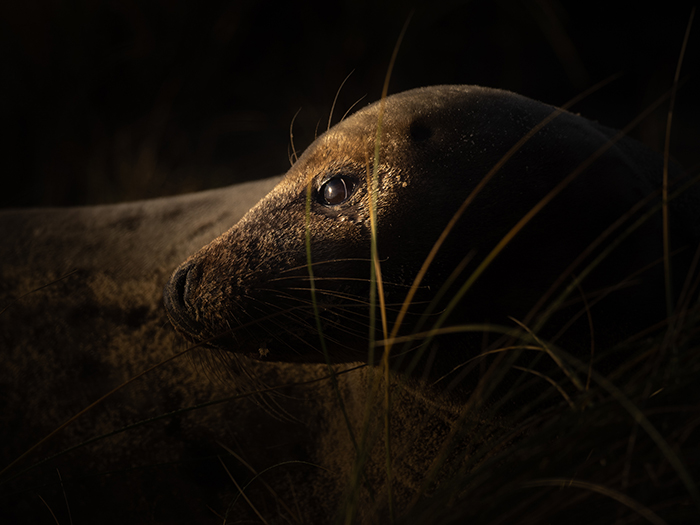
My plan was to spend 4 days with these giants on this stretch of beach before returning back home to Malta. This is my preferred approach to wildlife photography. Spending an intensive and lengthy amount of time in one place or with one species, produces better images in my opinion. I always get image ideas a long the way and the more time I have with the species the bigger the chance to achieve those specific images. For obvious reasons not all ideas become reality and go into the archive for next time.
During most of the stay, strong winds were ever present. The sand was constantly moving like a low-lying mist on the beach. Using a low angle and a little longer shutter speeds this moving sand turned out to look like snow in the images. A beautiful effect that I used a lot during my stay.
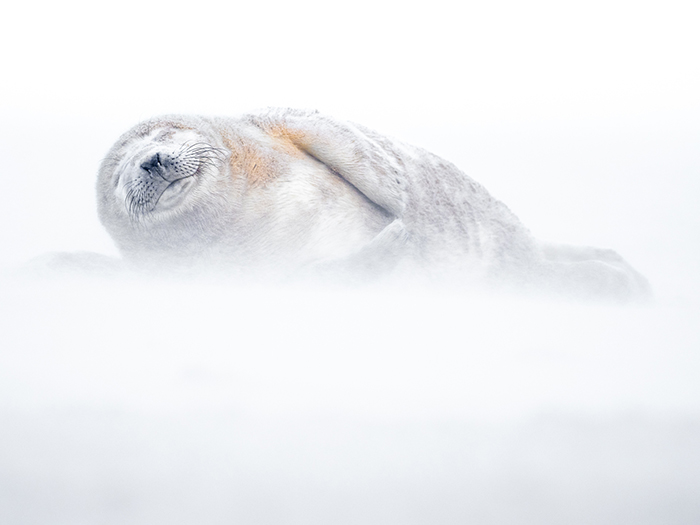
The Olympus gear were performing very well part from some buttons getting stuck due to grains of sand getting lodged between button and body. A bit annoying at times but should probably be expected when using your camera in a sand storm. Apart from this lens and camera were functioning perfectly in rain and wind without any type of rain cover.
Working with seals on a beach can be challenging. Many of them are not doing much most of the time. It doesn’t help that the outline of a resting seal is more or less identical to a stone which is not that exciting. Inspiration comes and goes, but as always it comes down to patience, creativity and grit. You just have to hang in there, be ready and you will be rewarded.
As an example, I had this idea in mind with 2 or more seals shot against the low sun in the morning or evening. The idea was to be able to find seals lined up in the perfect angle with the last or first rays of the sun. I would then get relatively close and shoot with the 300mm lens. Like that, I would get the rim light of only part of the animals and hopefully produce a rather graphic image. They would need to be relatively close to each other, in the right position and the right angle towards the sun at the right time. Easier said than done.
Since wild animals are not very good at following instructions this can take time of course. Sometimes you would find the perfect angle and two animals but they were too far apart. Or there is a small sand dune right behind the seals ruining the rim light. Or when the time is right, one seal decides to leave. Or when the sun is in the perfect position, the angle between you, seals and the sun is not ideal. The list goes on… In these situations patience and grit often pays off and if you keep on trying you get the image or images you were after.
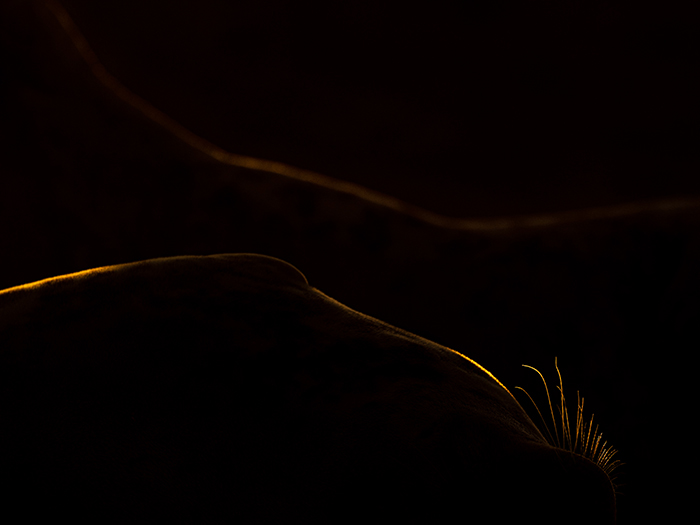
As mentioned earlier the reason the seals are on the beach is to give birth. That means young, fluffy seal pups to photograph. This article wouldn’t bea complete without images of white fluffy seal pups. The seal pups are fed by their mums for about 3 weeks to build up their fat reserves in preparation for an independent life. After about 3-4 weeks they are left to fend for themselves. By that time, they have shed their white and fluffy coat and are ready for a life in the water. One day they would themselves ascend on this beach to give birth to their own white and fluffy pups.
